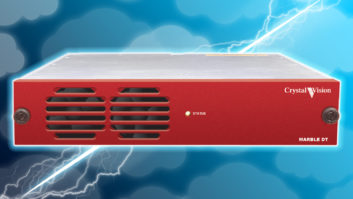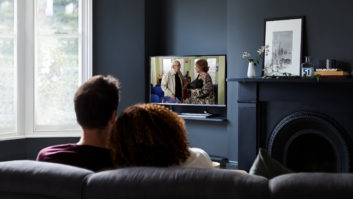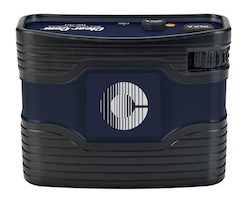A newly released industry report from Understanding & Solutions looks at the latest advances in the digital television sector and forecasts the key trends which will develop over the coming years.
At the end of 2006, 24% of households in Europe and the USA still relied upon the analogue terrestrial signal for their TV viewing, according to specialist research organisation Understanding & Solutions. This equates to more than 70m consumers who will have to make a decision whether to invest in digital terrestrial (DTT), satellite, cable or IPTV technology before analogue switch off (ASO) takes place. In particular, ASO has already taken place in the Netherlands, and nearly all countries will undergo this process by 2011.
“In addition to impending ASO,” said Graeme Packman, principal consultant with Understanding & Solutions, “key drivers for digital television include consumer demand for more channels, a better picture quality and interactive services. This is coupled with service provider ‘push’, driven by the higher revenues that can be derived from digital services. However, ASO is changing people’s traditional TV viewing habits, and the pay-TV industry is being forced to react to the reality that DTT is bringing subscription-free multichannel viewing to many homes for the first time.”
Although the satellite industry is still adding subscribers in a number of countries – notably Central Europe – satellite subscriber growth is slowing in most and will rely upon new house builds for growth rather than securing subscribers from other platforms. Understanding & Solutions estimates satellite (both pay and free-to-air) supplied 76m (25%) households with their primary TV viewing last year and this will increase to 85.2m (27%) by the end of 2011. Growth will be driven by two key factors, namely the launch of new services in Central Europe and the ability of key operators such as Sky to stay ahead by offering services like triple-play, HD and PVR.
For the cable industry, threats come from three main directions; the growth of satellite, the roll-out of DTT services and the launch of IPTV services. Cable has responded in varying degrees to these challenges. In the USA, the UK and selected other markets, cable operators have rolled out PVRs and triple-play services, and explored content deals. However, in less lucrative markets such as Central Europe, there has been little sign of cable gearing up to respond to these challenges.
Understanding & Solutions predicts that cable will lose overall share of TV households from 41% in 2006 to 39% in 2011. The US cable industry, despite digitising its networks and rolling out high definition, PVR and other services, will lose customers primarily to IPTV operators, which are making huge investments in their bid to attract subscribers.
“One factor in cable’s favour is that in many European countries it is deeply ingrained to the point where householders receive it as part of their tenancy agreements,” said Packman. “This locks subscribers into cable as effectively as any PVR service, and the result is that cable is better placed to defend its share of the market than it might otherwise have been.”
However, free DTT services enjoy the advantage of a soft target of 73m analogue terrestrial homes, which have so far resisted the temptation of signing up to pay-TV, but have to make the switch to digital in the next few years.
IPTV households, whereby TV pictures are delivered to a television set by means of Internet protocol via a set-top box, will grow from an estimated 2.8m in 2006 to a massive 30m by 2011. However, take-up has been relatively slow so far and IPTV will remain a ‘slow burner’ in the short term, although a significant growth spurt will occur towards the end of the forecast period.
BT in the UK has rolled out its BT Vision IPTV service with a hybrid box that relies upon the DTT feed for freely available channels, whilst routing through to BT’s broadband network for the extra content. This hybrid system saves BT’s network from handling more traffic than really necessary. Other operators such as Free in France, Fastweb in Italy and Deutsche Telekom in Germany are also now rolling out boxes incorporating DTT tuners.
For all digital operators, the issue of legacy MPEG-2 technology in both set-top boxes and IDTVs will prove to be a barrier. MPEG-4 AVC’s more efficient compression technology offers the carriage of 30-50% more standard definition channels within the same capacity as MPEG-2. The promise of a greater ability to carry high definition services using smaller file sizes, will also allow VoD operators to send more content to subscribers’ PVRs without exceeding the capacity of their hard drives so easily.
However, MPEG-2 has been available for 15 years whilst the standard for MPEG-4 AVC was only finalised in 2004. As a result, there is a substantial installed base of STBs and IDTVs that are unable to handle MPEG-4. Consumers in many markets have only recently invested in MPEG-2 products to receive DTT services and are likely to resist spending more money to replace their devices so soon. An extreme case in point is the UK, which now has an installed base of over 14m IDTVs and DTT set-top boxes, over half of which were bought within the last two years.




